Doctor Octobacklogtopus (16/10/2015)
By Mento 6 Comments
Look. About the title. The fact is, I am not the first person on this website to blog about their backlog this month. I'm not even the second or third. Latecomers face diminishing returns when it comes to choosing a droll portmanteau out of the remaini-
You know what, all of that is neither here nor there. What is here, and perhaps over there if you too are proverbially floating down the river on a rolling backlog as we speak, is that I took the week off from frying bigger fish on my Pile of Shame to bash out a few micro-sized Indie games I was curious enough about. It's my way of showing some solidarity with my blogging peeps and what they're up to this month. After this, I'm looking to get into something monumental for the next week or so to tide me over until my next Successful Existence Perpetuation Day and the handful of video game-related boons that follow. Long-delayed playthroughs of Yakuza 3 or Tales of Graces F (I know Xillia's better, but Graces is the next in order) are presently vying for attention right now.
I'm not going to bust out another May Madness daily series in the middle of October, but I will go over a few of these because they played with my expectations a bit. I haven't seen a whole lot written about them elsewhere, so maybe there are others who are similarly in the dark (which might be foreshadowing for one of them). (In fact, the word "foreshadowing" is probably foreshadowing too.)
Out There Somewhere
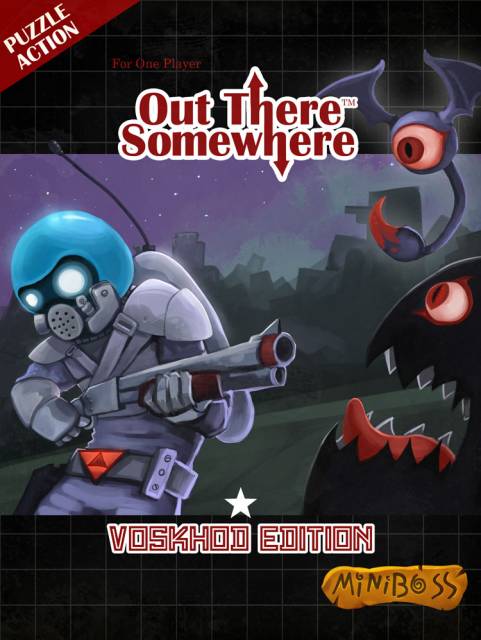
All I knew about this game going in was that it was a pixel-based SpaceWhipper and probably on the short side. I'd recently had a middling time with another game that matches that description: Renegade Kid's Xeodrifter. Xeodrifter has all the presence of a TI-83 calculator game, which isn't quite the pejorative I'm making it sound like. It has a deliberately compact look with its economical sprite graphics and dinky size. This is in spite of it borrowing a page from Metroid Prime 3 and presenting a number of different planets to visit; the idea being that you would haul ass to the lava planet if you ran into a transitory dead end on the water planet. Yet, each of the planets were effectively identical anyway: the player earns half a dozen upgrades to overcome certain obstacles which are present on every planet. The boss of each planet is the same too; it just learns a few new tricks each time you fight it. Though challenging, it felt extremely small in both scope and vision, like it was finished in one of those 72-hour game jams (more foreshadowing!). That might well be the case for all I know, but it cost the same as any other Steam Indie game, so...
...I digress. Out There Somewhere isn't that. It's even less substantial, actually: a perfectly linear puzzle-platformer with the occasional hidden collectible along the way. The story involves a space cop chasing an intergalactic El Presidente type across a planet full of traps, hostile creatures and a few friendly aliens for some quirky exposition. The gameplay's focused around the protagonist's chief "weapon": a gun that can only be fired horizontally that will instantly teleport the hero to where its beam stops as soon as it hits a solid surface. What begins as a few screen-clearing jumping puzzles becomes a gauntlet of timed challenges and learning to jump just as the beam hits the wall to use the upward momentum to launch yourself even higher. Colored teleport beams either deflect, absorb or redirect the teleportation beams you fire, and you quickly find a second, slightly more conventional weapon to take out troublesome foes.
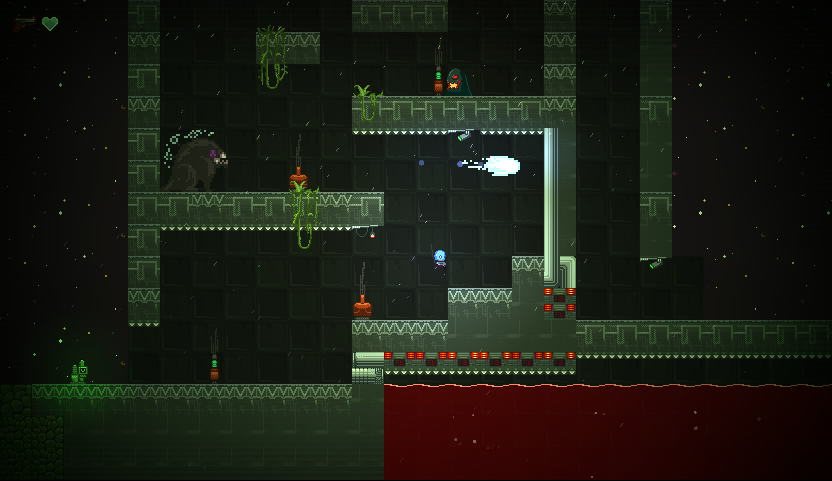
The game's very short, though, and there's often no way to go back to earlier areas. If you're looking for the game's handful of collectibles you're probably going to miss a few without realizing: all they do is boost your HP and that of your ship, however, and the game has plenty of checkpoints. Talking of your ship, the game has a few cursory horizontal shoot 'em up levels but they're equally superficial and brief. It's not a bad game, per se, but like Xeodrifter it's not particularly deep or interested in doing a whole lot with its central premise. It feels a bit more like a tech demo for its Portal-esque gimmick, or a game that had to be out of the door quickly to keep the developers in solvency so that they might work on something a little more meaty the following time around. All the same, it looks fine and has a decent amount of challenge. An ideal "bundle booster" that might eat an afternoon.
Shadowgate
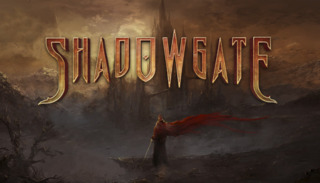
I'm not sure why I was excited for a Shadowgate remake, in retrospect. The original has a lot of problems due to its archaic conventions. At the time, of course, it was a revelation in how it exploded what was a very small field of graphic adventure games with the "point and click" interface that would later become synonymous with the genre. Using the Mac's mouse and window interfaces meant you could click on anything in the view window you wanted to examine, pick up or manipulate. I'm not old enough to really talk about how it and its fellow MacVenture games helped to transition adventure games from the old Zork/Infocom text style to the modern day Sierra/LucasFilm graphic adventure and its many offspring, but it was quite the step to take. We're not here for a history lesson regardless.
The new Shadowgate, then, had to carefully choose which elements of the original to modernize and which to leave as is, so as to not alienate newcomers or veterans alike. It's an extremely difficult balancing act, and one that only a handful of recent throwbacks have managed to pull off without error. For as much as I adore XCOM: Enemy Unknown, Might & Magic X Legacy and Legend of Grimrock 2, they all made the occasional misstep in holding onto what ought to have been abandoned to the annals of video game lore. Shadowgate's a so-so example of this modernization process, retaining aspects which it presumably felt were "Shadowgate-y" to a tee but just turned out to be annoying in a modern context.
The most pertinent issue I had with the game is how it reduced puzzle complexity for lower difficulty modes, but also made it way easier to hit a "dead man walking" state, to paraphrase TheCRPGAddict: that point in which an adventure game or RPG passes an invisible time limit and becomes impossible to complete. Playing on a lower difficulty means having a lot more leeway with these game-wide timers, but it feels as if the game would've benefited a whole lot more by excising them entirely. Unfortunately, one of these timed aspects are the torches: Castle Shadowgate has a number of torches the player can ransack from their sconces, but the player's own torch will slowly dwindle and go out if they don't regularly replace it. The game's quite lenient when it comes to how long a player has left on their torch, and the game's timer is based on actions the player performs that aren't simply examining an object: like, say, passing through an exit, picking up an item or moving a lever. Yet... I feel like this one instance throws into perspective the issue with modernizing a relic like Shadowgate: there shouldn't be a time limit whatsoever, but at the same time you can scarcely imagine what a Shadowgate game would be without its panic-inducing torchlight feature. Shadowgate doesn't have grues waiting for you in the shadows if your torch does go out, but you'll still quickly die without a light source to guide you. That's how its always been.
If I had to specify what exactly made Shadowgate such a terror back in its era, it was how it had zero tolerance or mercy for a player's inquisitiveness. Almost anything could kill you. There's a book early on that will kill you if you try to pick it up: instead, you need to read it on its lectern without disturbing its placement. Enemies will appear and then kill you within a turn or two, unless you use the right combination of items/commands to deter them. You could drink a potion and die immediately, or fall off a bridge, or get roasted by a dragon. The Shadowgate reboot does keep this aspect intact and with the added benefit of simply restoring to the last "safe" point. Its puzzles are also clever and each of its wonderfully detailed screens is filled with red herrings to collect. There's quite a lot of optional lore too. It's a bit of a shame about the aforementioned ticking clock, manifested here as an inescapable undead curse, that forces you to rush through the early parts of the game as quickly as possible to reach the cure (or play on a lower difficulty, but then that also lessens the game's many clever puzzles).
All in all, I'm still not sure if I liked this one. I did like being back in Castle Shadowgate once more, but I felt as if the balance between old and new was a little off. For another example: there's no fast travel when backtracking. Backtracking comes up a few times in the game: there's a missing skull in the frame around the ominous doorway that introduces the game that you don't fill until hours later, for instance. The intricate artwork also obscures a lot of important information and items, and there are a number of times where you're meant to determine that a discolored block in a given room is a desk with drawers you need to rummage through for some vital items. When the same developers come back for the 2016 Beyond Shadowgate remake - and I have some traumatizing experiences with the game that's based on as well - I suspect they'll get closer to that desirable equilibrium.
Retro Game Crunch
Now this was a surprise. Retro Game Crunch is a collection of games not unlike Xeodrifter and Out There Somewhere above. Each of the seven games included here is based around a clever little feature or premise that, due to their individual short sizes, don't overstay their welcome. I believe each of the games from this compilation came about due to game jams and other limited-duration game development contests. You can search for them individually to find shareware browser versions on the developer's site, each displaying the theme that the game jam was based around.
Invariably, every game feels like a forgotten NES classic. I have a little post-script that will go into why I had Nintendo's inaugural system on the brain (and it's not because of its imminent 30th birthday this Sunday, but... hey, happy 30th anniversary to the US release of the Nintendo Entertainment System all the same) but I imagine that every one of these would've been a staple of the system had they been created a few decades earlier. I'll go into more detail for all seven, though I highly recommend picking this collection up if you're into - or are not sick to death of - solid NES throwbacks like Shovel Knight or Oniken (or maybe that new Downwell game, which I ought to check out at some point, though that looks more MSX1/C64 era).
Super Clew Land is a platformer SpaceWhipper that feels a little like the cutesy Game Boy platformer Trip World mixed with SNES oddity EVO: Search for Eden. Given that the theme of the game jam that spawned it was "evolution", I guess that's explicable. You're limited early on by being stuck in a slow, slug-like form that can't do much of anything besides eat worms. Devouring prey gives the little hero blob a few colored pellets of nutrition which the player has to configure on the fly in a tiny matching puzzle game-within-a-game. Successfully completing these mini-games increases your creature's evolution bar which, when full, gives the hero a new ability: jumping, first and foremost, but also fins to swim, a horn to smash through rocks and, eventually, flight to open up the world for some exploring and trinket-collecting. It culminates in some tricky obstacle-avoidance puzzles right out of VVVVVV before ending on a quite challenging boss fight. It's the first game that pops up in the collection, but it might be the most difficult too. As a SpaceWhipper, its on par with Xeodrifter or Out There Somewhere in terms of creativity and scope, which makes its tiny length and the fact it's only one seventh of this collection quite extraordinary, if only comparatively speaking.
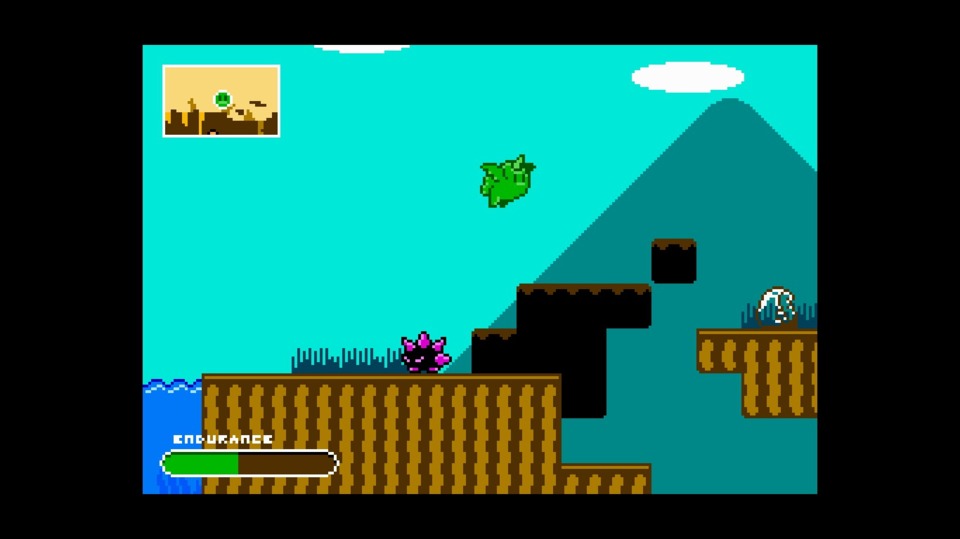
End of the Line is a brilliant puzzle game which posits a future in which humanity has been wiped out and only their robotic creations remain, stuck in a constant programming loop and beholden to the three laws of robotics for all eternity. One robot, EOL, decides to take matters into his own hands and find a way to go offline permanently (i.e. die). A little morbid, but the game finds ample clever ways to subvert what would normally be the standard instant-resurrection archetype for a puzzle game like this. Whenever EOL dies, another robot trots across the stage to resurrect him on a specific regen panel. In order to prevent this from happening, EOL has to figure out how to break every other robot (and stop them from resurrecting each other) before finally destroying himself. The game manages to squeeze a respectable 40-50 puzzles out of this premise and each new zone has new toys to play with: Mega Man-style suit upgrades that give EOL new abilities (with which to creatively suicide himself), laser beams that can be redirected in that old trope, Sokoban crate-pushing puzzles, etc. Though familiar, none of these puzzle types are run into the ground and the game has a brisk pace to it, barring a few of the more challenging screens.
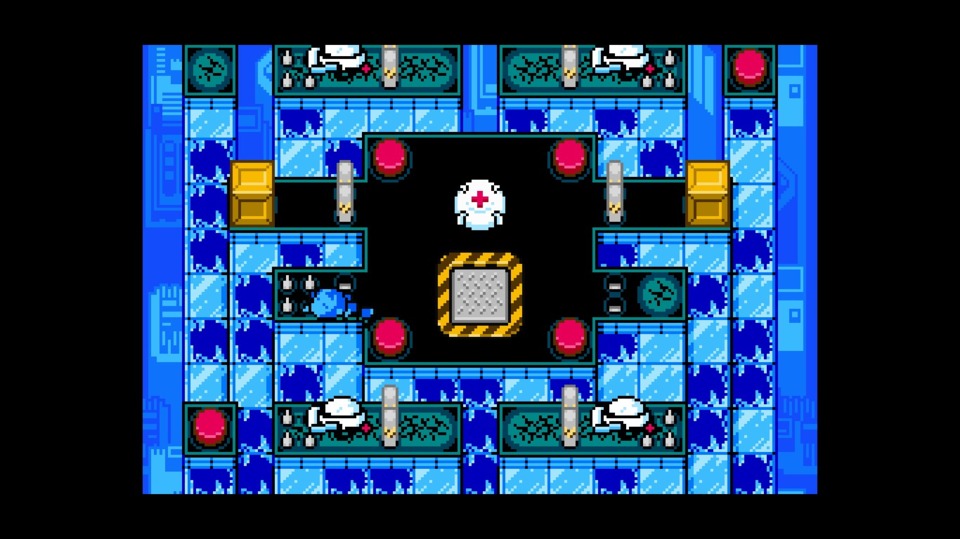
Gaiattack's a vertically-oriented brawler/platformer that I'm at a loss to compare to anything, except maybe couch multiplayer games like Samurai Gunn or TowerFall. A nebulously evil force of pirates are strip mining the planet and various elemental guardians rise up to fight off their industrial meddling. Each stage involves a long, forced-scroll platforming sequence up a vertical mine shaft that builds up to a boss fight against a wily pirate captain on his airship. The shaft is filling up with dangerous natural forces - lava, brambles, quicksand - and you have to quickly clobber or evade the waves of enemies that parachute in from above to stay ahead of the creeping doom. While the majority of the enemies are purple a rare few are yellow, which drop special power-up tokens that give you a one-off horizontal-sweeping special attack, while others are red and drop health-restoring hearts. Though the enemy placements and types remain constant, their colors are randomly assigned every time you restart a sequence after dying: if you get taken out by a tricky grouping of enemies, you might find that there are a few more yellow/red enemies the second time around that'll tip the odds in your favor. The scrapping, while rudimentary with its single-button controls, is fast and offers opportunities for juggling and combination attacks. All in all it's a neat game.
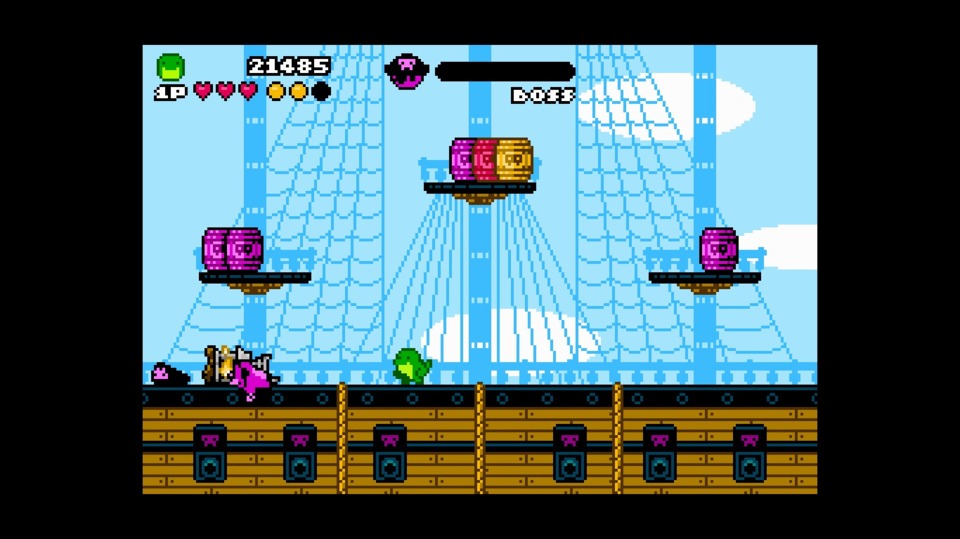
Paradox Lost feels like the flagship game of this particular collection, in the same way The Cheetahmen was for Action 52 (though I'm loathe to mention the two compilations in the same sentence given the vast superiority of Retro Game Crunch). Like Super Clew Land it's a SpaceWhipper, though it has a time-travelling feature that quickly makes it a surprisingly tricky game to follow. At various blue crystals, the heroine can shoot a time-travel beam that warps her back (or forward) through time. Each of the game's three time periods of "past", "present" and "future" have different layouts and different pieces of equipment to find: the heroine can expand the territory she can explore with every new upgrade in the standard SpaceWhipper format. It can get confusing fast with the amount of time-hopping you end up doing, and there's some thirty-plus prisoners to find across the three eras, but from what I played of the game it seems quite a bit more extensive and layered than Super Clew Land was. It is, to tacitly reference another compilation I have some amount of affection for, the Great Cave Offensive to Super Clew Land's Spring Breeze.
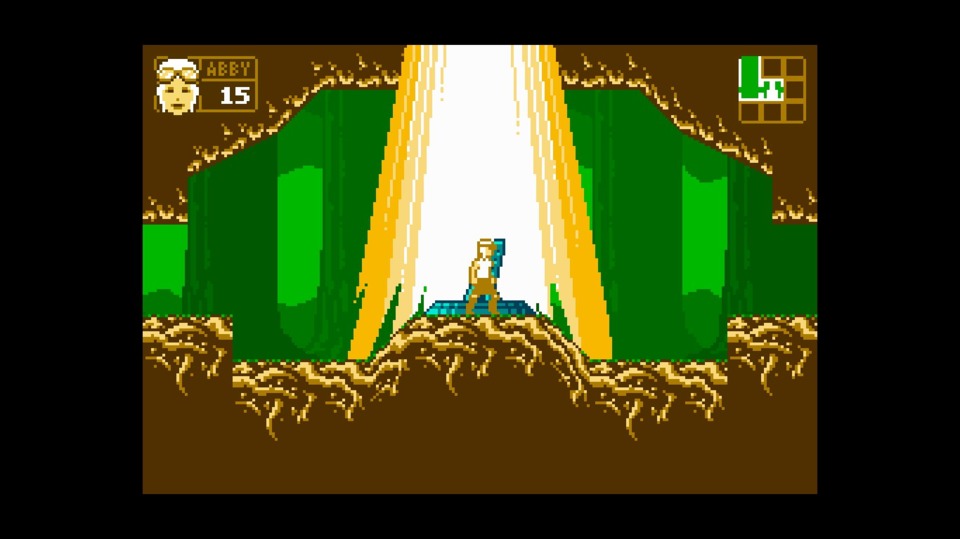
Wub Wub Wescue feels like the most Rorie game to ever exist, and yes I'm invoking Giant Bomb's puppy-loving Product Manager as an adjective. The game feels like a spiritual successor to Donkey Kong and Donkey Kong Jr.: the goal of each of its single-screen stages is simply to find a safe way to the protagonist's master. The protagonist, a pug that's presumably the Wub Wub of the title, can only fall so far before dying. It'll also croak if it bumps into any wildlife. Throughout the stage a couple of tribesmen are banging a drum, which seems to cause the agitated animals to move with the rhythm: by finding certain songs (on olde-timey gramophones, "His Master's Voice" style), Wub Wub can recreate them and temporarily get assistance from the otherwise hostile animals. Venomous snakes go to sleep, swooping bats instead carry Wub Wub up or down the level and mischievous monkeys will toss Wub Wub across for as long as their tunes are active. There's even a song that will slow down the beat of the drums, which makes certain platforming sequences easier. As with End of the Line, each new "Act" introduces new obstacles to overcome and is briskly passed through to keep things fresh and engaging.
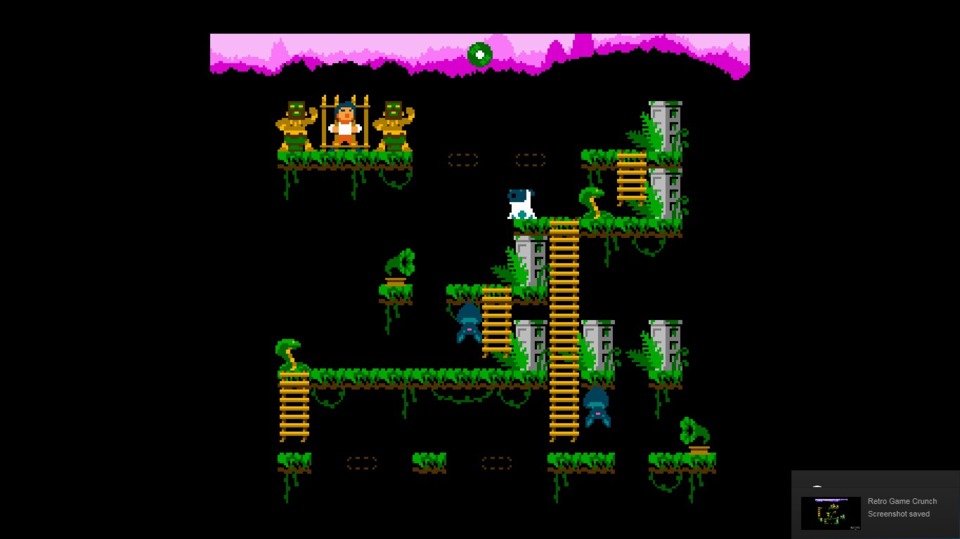
Brains & Hearts is the only duff game of this compilation, in my view. It's a card game that feels like a down-scaled version of Gin-Rummy and seems far too arbitrary to be any fun. There might be some challenge to the game's central goal of collecting runs of numbered cards - drawing in those from the opponent's side of the table when applicable - but a lot of it seems to come down to pure luck from what I've observed. Either way, it's not a particularly engrossing card game, so I quickly moved on.
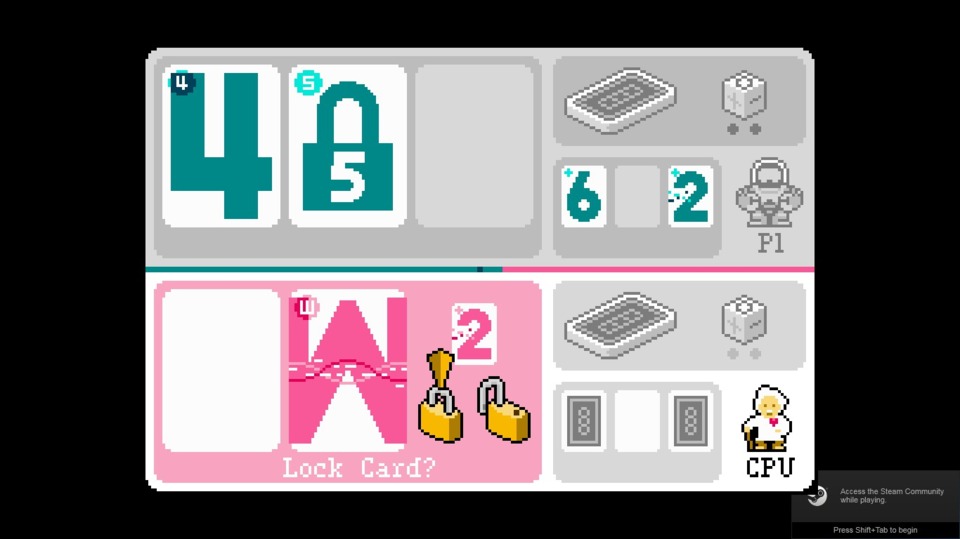
Shūten is perhaps the highlight of this entire compilation. It's a vertical shoot 'em up with an on-foot protagonist that makes ample use of Japanese mythology to draw inspiration for its adversaries. In that respect, it's not a million miles away from Pocky and Rocky (Kiki Kaikai in its native land), yet the pace of the game and the size of its enemy waves create something that is more spiritually akin to a bullet hell shooter without the bullets. The enemies do have projectiles, of course, but the evasion aspect comes more from the enemies themselves as they quickly fly in and out of the stage. Each round has its own boss fight against various Eastern foes: a giant turtle, phoenix, dragon, wolf and octopus - the first four of which feel like analogs of the Chinese four gods of the cardinal directions. The game's central feature is how your protagonist is initially only equipped with a weak sword (though it has the capacity to reflect enemy projectiles, which comes in handy) but can acquire the skills of other enemies by charging the sword up and siphoning their power from them. Each enemy type has a specific projectile that is associated with it: ninjas have spread-shot shurikens, Oni/Noh faces have forward-focused kunai (which the game refers to as "dirks" in what I imagine is a goof on early localization efforts to "un-Japan" more than a few NES games), whirlwind enemies have cross boomerangs that fly in an arc and return to your hand, etc. These weapons can all be upgraded permanently by collecting and spending money at the shop: money is usually found whenever a wave of enemies has been defeated in its entirety (like the power-up drops of Gradius) and in larger amounts depending on the size of the wave and the strength of the enemies within that wave. By going out of your way to completely annihilate a wave of enemies and running for the dropped gold, you can use the funds to make your next attempt on that level - or any other - go more fortuitously in that classic Rogue Legacy/Super House of Dead Ninjas format of incremental improvements. I'm generally not a proponent of shoot 'em ups, but I enjoyed my time with this one.
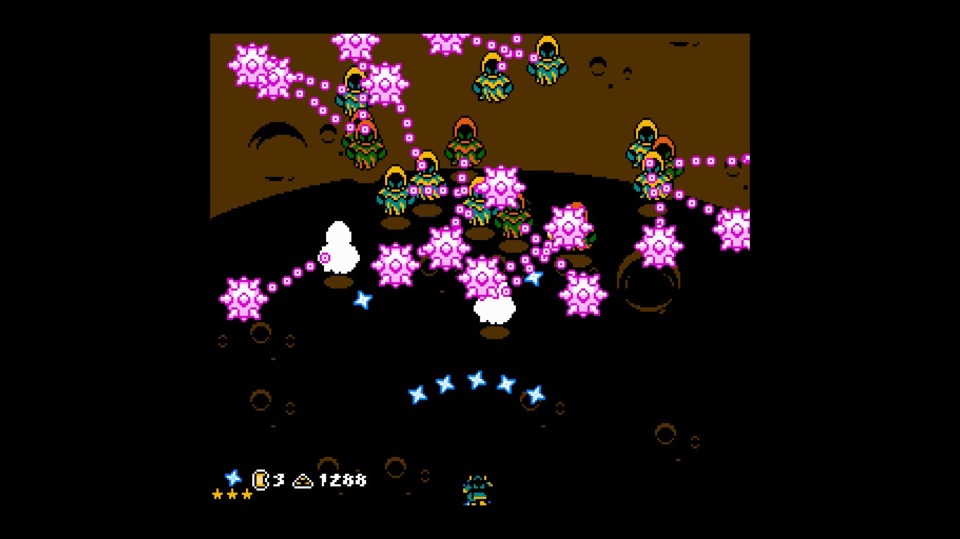
Bonus Wiki Project Post-Script!
I'm happy to announce that I've completed my latest mini project for the Giant Bomb Wiki, though it was really just some clean-up. A couple of years ago I added a bunch of Famicom Disk System games to the wiki in order to ensure we had the full set. That was all in my pre-mod days, and before I'd reached the level of wiki proficiency that I have today (which, honestly, probably has some way to go still). All 192 discrete games that were released for the Famicom Disk System - upon which I went into way more detail when I first did this Wiki Project - now have full correct FDS release data, header images and at least a number of system-specific screenshots. Between Retro Game Crunch and all these FDS games, I might be sated with the 8-bit format for a while.
Next wiki project? Well, it's about time I do something with all these Atari ST games I keep bringing up every week...
